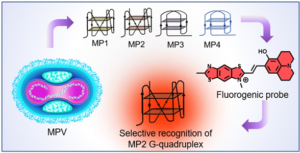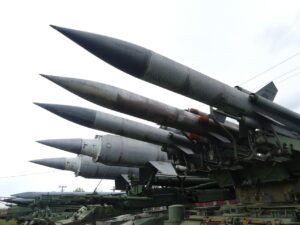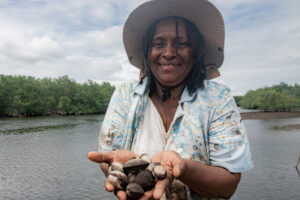
Simulations are a type of preparedness vital, not just in face of Fusarium TR4 but also for many other diseases and pests. © FAO-IPPC/Preet Parmar
In the ongoing battle against agricultural pests, simulation exercises have emerged as a critical component of global plant protection strategies. They can be used to undertake preparedness activities for all emerging pest risks.
One such example of a simulation, which has taken place in an array of countries, is Kenya. Participants in the simulation learned how to prevent and contain emerging threats like Fusarium Fusarium Tropical Race 4 (TR4) fungus. and worked on developing a contingency plan in case the situation were to arise for real.
Hosting the Fusarium TR4 simulation exercise was the Kenya Plant Health Inspectorate, the country’s National Plant Protection Organization (NPPO). Playing a leading role, as an organizer, was the International Plant Protection Convention (IPPC) Secretariat of the Food and Agriculture Organization of the United Nations (FAO), which coordinates global efforts against Fusarium Tropical Race 4 (TR4) fungus.
Under the design of its Common Market for Eastern and Southern Africa (COMESA), the trade facilitation project was funded by the European Commission and involved participants from COMESA member countries.
Following is an illustration of the simulation exercise in Kenya:
The banana plantation quickly turns into a scene of frenzied activity. The farm manager places an emergency call to the National Plant Protection Organization (NPPO) to notify them that some of his trees are showing symptoms of the highly destructive Fusarium Tropical Race 4 (TR4) fungus.
The agency rapidly deploys staff to the farm. On arrival, the NPPO team dons Personal Protective Equipment (PPE), disinfects their shoes and tools and follows the other biosecurity protocols needed to begin identifying the problem trees. The team then sets up a quarantine zone and instructs the farm staff not to enter the area. If the pathogen is allowed to spread, it spells certain doom for the banana plantation.
Luckily, for now, this grim scenario was purely hypothetical. Moses Njorah Kibuthu, a banana worker on the Bendor plantation located 50 kilometres from the country’s capital Nairobi, describes it as enormously useful.
“Now, we know what we have to do, to take every preventive measure to protect our plantations and our livelihoods,” he says.
Expertise from across the ocean
What was significant about this particular simulation was that it was carried out for the first time in Africa in collaboration with FAO experts from Latin America and the Caribbean, a region that has years of experience in combating this pathogen.
“If we want to prevent TR4 from gaining a foothold in other regions, including Africa, and destroying countless livelihoods, it’s vitally important to transfer the knowledge which we have gained in Latin America,” says Raixa Llauger, FAO Agricultural Officer in the Latin America and the Caribbean region.
During the field simulation, FAO technical experts demonstrated how to take samples of infected plants and destroy them to contain the spread of the pathogen in a plantation.
The simulation was also conducted at the Plant Quarantine and Biosecurity Station laboratory in Muguga, Kiambu where participants were trained on how to receive a priority sample, maintain biosecurity measures and communicate the results of the analysis back to the farm and other relevant stakeholders. Local chiefs were also invited to ensure the community was aware the simulation was training and not an actual outbreak.
During the preparation for the overall simulation, organizers also visited Nairobi’s Jomo Kenyatta International Airport to get a first-hand understanding of one of the risk pathways through which infected plants or plant products could enter Kenya.
Enormous stakes
The stakes are enormous. Bananas and plantains are grown in 135 countries globally, where more than 400 million people depend on bananas for food security, accounting for USD 10 billion in global trade every year.
So far, only three African countries have reported cases of the fungus. But Fusarium TR4 is particularly insidious due to its persistence in the soil and its ability to spread through contaminated equipment, water and plant material. At present, there is no way of eliminating Fusarium TR4 once it’s in the soil, making prevention, preparedness and timely response critical in stopping its spread.
While the pathogen was first identified in Latin America in 2019, simulation exercises had been carried out before its arrival and continue to be carried out in Bolivia, Belize, Colombia, Costa Rica, Dominical Republic, Ecuador, El Salvador, Guatemala, Honduras, Mexico, Nicaragua and Panama.
The strategy has allowed countries to strengthen the preventive approach and biosecurity throughout the production, transportation and international trade of bananas, thoroughly reviewing their plant health monitoring systems, Llauger explains.
Among the success stories is Colombia. The country has been able to slow down the advance of the disease, allowing production and export of bananas to actually increase from 2019 until the end of 2023 despite the presence of Fusarium TR4.
The importance of this type of preparedness is obvious when it comes to improving food security and protecting the livelihoods of countless families in banana and plantain-growing countries. But such efforts can play a vital role, not just in the face of Fusarium TR4, but also in the many other diseases and pests, which are increasing with climate change.
Source: The FAO News And Media Office, Rome
– global bihari bureau





